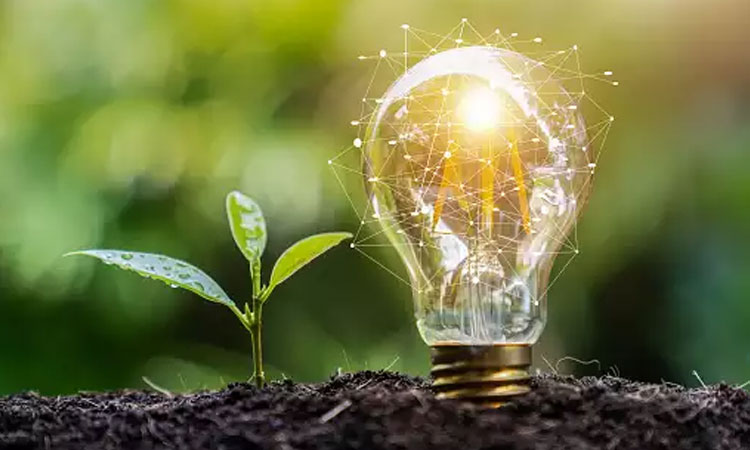Energy harvesting, also known as power harvesting or energy scavenging, is the process by which energy is derived from external sources (such as solar power, thermal energy, wind energy, salinity gradients, and kinetic energy), captured, and stored for small, wireless autonomous devices, like those used in wearable electronics and wireless sensor networks. Rather than relying on batteries, energy harvesting devices use alternative power sources to operationally power themselves. By taking ambient available energy from the environment and converting it into electricity, energy harvesting solves the problem of powering devices in remote locations where replacing or recharging batteries may be inconvenient, dangerous or impossible.
Types of Energy Harvesting
There are several common technologies used for energy harvesting based on the type of ambient energy source:
Photovoltaic Energy Harvesting
Photovoltaic or solar energy harvesting uses solar cells to convert light directly into electricity. Solar cells made of materials like crystalline silicon are very efficient at converting sunlight into a voltage or current. Solar energy harvesting is well-suited for applications exposed to normal indoor or outdoor lighting levels. Advances in thin-film solar cell materials have enabled the integration of photovoltaics into small, flexible, and transparent forms suitable for harvesting on virtually any surface with exposure to light.
Thermoelectric Energy Harvesting
Thermoelectric Energy Harvesting Systems utilizes the Seebeck effect where a temperature difference between two points in a conductor generates voltage. Thermocouples, which are pairs of dissimilar conductors, can absorb heat from environmental temperature gradients and human body heat to directly generate small amounts of power. Thermoelectric harvesters are well-adapted for applications that can be in close proximity to heat sources without any moving parts. Optimization of new thermoelectric materials is expanding the range of temperature differences and conversion efficiencies possible.
Vibration-Based Energy Harvesting
Vibration-based energy harvesting scavenges power from ambient vibrational motion or acoustic noise in the environment. Piezoelectric and electromagnetic conversion mechanisms are often used to transform kinetic vibrational energy into electrical energy. Common vibration sources exploited include operating machinery, moving vehicles, infrastructure, and environmental vibrations or user movements when piezoelectric materials are integrated into footwear or apparel. Advances are enabling more efficient vibration energy harvesting from even very small vibrations accessible.
RF Energy Harvesting
RF or radio frequency energy harvesting involves collecting ambient electromagnetic radiation or dedicated wireless power transmission signals in the radio frequency spectrum and rectifying it to produce direct current power. RF energy is abundantly available from sources like television, cell phone, Wi-Fi, and Bluetooth transmissions in urban environments. Dedicated RF power transmitters can also energize passive devices at distances of over 1 meter. RF energy harvesting components like rectifying antennas have undergone development work to effectively capture this type of wireless power.
Other Techniques
Other less mature energy harvesting technologies being researched include kinetic or fluidic energy harvesting from flows, gradient harvesting utilizing concentration gradients, and biological or chemical harvesting leveraging enzymatic or microbial processes. Additionally, combinations of different harvesting sources (solar, thermal, vibration, etc.) can multiplicatively increase overall power yields through intelligent multi-modal or hybrid energy harvesting systems.
Advantages of Energy Harvesting for IoT
Energy harvesting provides several key advantages for powering devices in emerging applications related to the Internet of Things (IoT):
Extended Lifetimes – By harnessing ambient available energy, electronic devices can operate indefinitely without needing replacement or recharging of finite battery power supplies. This enables the creation of permanently embedded networked sensors with operational lifespans measured in decades rather than months.
Reduced Maintenance – Devices powered by energy harvesting eliminate routine battery replacement tasks, reducing long-term operational and maintenance costs. Energy harvesting systems are especially useful for sensors in remote or inaccessible areas.
Greater Scalability – As billions of new IoT endpoints come online, energy harvesting could avoid enormous demand for battery manufacturing and disposal associated with non-renewable battery-powered devices. This facilitates mass-scale IoT deployments.
Improved Sustainability – Leveraging ubiquitous ambient energy sources aligns with green energy principles. Energy harvesting helps minimize environmental impacts and carbon footprint from batteries over the large and growing number of deployed wireless sensors and gadgets.
New Design Possibilities – The option of perpetual power enables novel form factors unconstrained by battery size and replacement considerations. This further enables thin, flexible, and miniature IoT device designs with freedom to harvest energy wherever it naturally occurs.
Applications and Impact of Energy Harvesting
Energy harvesting technologies already power emerging applications including:
– Wireless sensor networks for environmental monitoring, infrastructure inspection, precision agriculture, and smart cities.
– Implanted medical devices such as pacemakers and glucose monitors that harvest power from body motion or heat.
– wearable consumer devices such as fitness trackers, smart patches, and smartwatches that can harvest from body kinetics or light exposure.
– Industrial monitors for pipelines, rotating machinery, and factory automation leveraging vibration harvesting from process equipment.
– Smart home controllers, switches, and occupancy sensors running on harvested light, thermal, or kinetic room energy.
As energy harvesting improves in efficiency, capacity, and conversions from more sources, its role in the IoT is expected to greatly expand over the coming decades. Novel multi-source energy harvesting advances will be key to meeting demanding power needs for emerging applications utilizing artificial intelligence, augmented reality, and 5G connectivity. Ultimately, widespread deployment of energy harvesting technologies could meaningfully reduce reliance on battery supplies globally and support more sustainable energy usage practices at massive IoT scales.
*Note:
1. Source: Coherent Market Insights, Public sources, Desk research
2. We have leveraged AI tools to mine information and compile it




